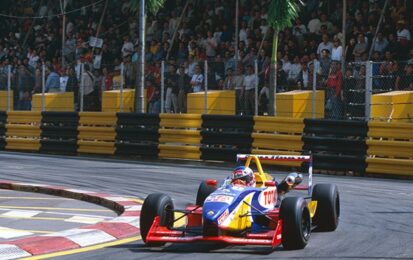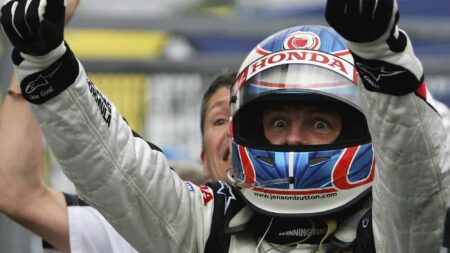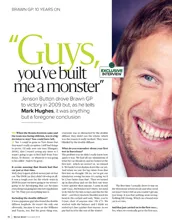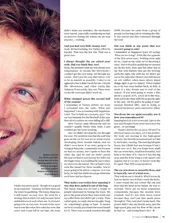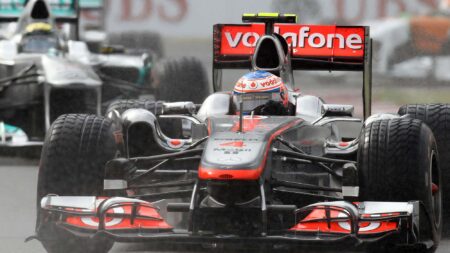For most of the race, he trailed Marcos Ambrose while under attack from Dan Wheldon, displaying both patience and increasing aggression.
The turning point came on lap 18: Ambrose left a daring gap at the Surtees corner, and Button seized the opportunity, diving inside as Ambrose moved to close the door.
The resulting contact sent Ambrose off, but Button remained unflustered, controlling the lead to the chequered flag in one of the closest finals in Festival history.
The victory, soon followed by the McLaren Autosport BRDC Young Driver Award, marked Button as a star in the making.
1999 British Formula 3
Thruxton
By 1999, Button had graduated to British Formula 3 with Promatecme. While his season was marked by flashes of raw speed, it was at Thruxton where his potential stood out.

Button took his first F3 win in 1999
Getty Images
Starting from second on the grid, Button had a strong start, quickly overtaking pole-sitter Andrew Kirkaldy to take the lead.
During the 20-lap contest, Button pushed his Dallara F399-Renault to the limit, holding off fierce competition from Kirkaldy and Marc Hynes.
Managing the slipstream battles down Thruxton’s flat-out stretches, Button drove with the poise of a veteran.
He soaked up pressure lap after lap before pulling clear to claim a commanding victory, his first in F3.
The win was one of three victories he secured during the 1999 British F3 season, highlighting his status as the top rookie and finishing third overall in the championship.
2000 British GP
Silverstone
Button’s first home grand prix was a coming-of-age performance that transformed him from a precocious debutant into a genuine Formula 1 contender.

Button on his way to fifth place at Silverstone
Getty Images
Barely four months into his rookie season with Williams, 20-year-old Button arrived at Silverstone still finding his footing.
The cool, changeable conditions suited his natural smoothness, and Button delivered a drive that showcased his maturity.
Having qualified sixth, he made a solid start, holding his own in the early laps against far more seasoned rivals.
While others struggled with balance and tyre degradation, Button’s trademark finesse allowed him to maintain a consistent pace around the fast, flowing corners of Silverstone.
Button finished fifth – his second points finish – becoming the youngest driver ever to do so at that point.
2004 San Marino GP
Imola
For all of Button’s trademark race-day finesse, it was on a single qualifying lap at Imola in 2004 that he truly arrived as a frontrunner.

Button’s qualifying lap at Imola was one for the books
Grand Prix Photo
In only his third race with BAR–Honda, Button produced a performance that silenced any lingering doubts about his credentials as a top-tier driver.
In the final moments of qualifying, he delivered a sensational lap, extracting speed without ever seeming to fight the car.
He was fully committed through the Variante Alta, clipping kerbs with millimetric accuracy.
When the stopwatch stopped, he’d beaten Michael Schumacher’s Ferrari – at Imola, no less – to secure his first Formula 1 pole position.
2006 Hungarian Grand Prix
Hungaroring
Few drives encapsulate Button’s genius quite like his first Formula 1 victory, forged in the chaos of a wet–dry afternoon at the Hungaroring in 2006.

Button showcased all his skills to take his first F1 win in Hungary
Grand Prix Photo
Starting from 14th on the grid after an engine penalty, his prospects looked slim, but as dark clouds rolled over Budapest and the race began on a soaked track, Button produced a performance of stunning control and intuition.


